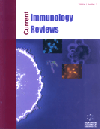-
oa Host-Cell Survival and Death During Chlamydia Infection
- Source: Current Immunology Reviews (Discontinued), Volume 3, Issue 1, Feb 2007, p. 31 - 40
-
- 01 Feb 2007
Abstract
Different Chlamydia trachomatis strains are responsible for prevalent bacterial sexually-transmitted disease and represent the leading cause of preventable blindness worldwide. Factors that predispose individuals to disease and mechanisms by which chlamydiae cause inflammation and tissue damage remain unclear. Results from recent studies indicate that prolonged survival and subsequent death of infected cells and their effect on immune effector cells during chlamydial infection may be important in determining the outcome. Survival of infected cells is favored at early times of infection through inhibition of the mitochondrial pathway of apoptosis. Death at later times displays features of both apoptosis and necrosis, but pro-apoptotic caspases are not involved. Most studies on chlamydial modulation of host-cell death until now have been performed in cell lines. The consequences for pathogenesis and the immune response will require animal models of chlamydial infection, preferably mice with targeted deletions of genes that play a role in cell survival and death.


